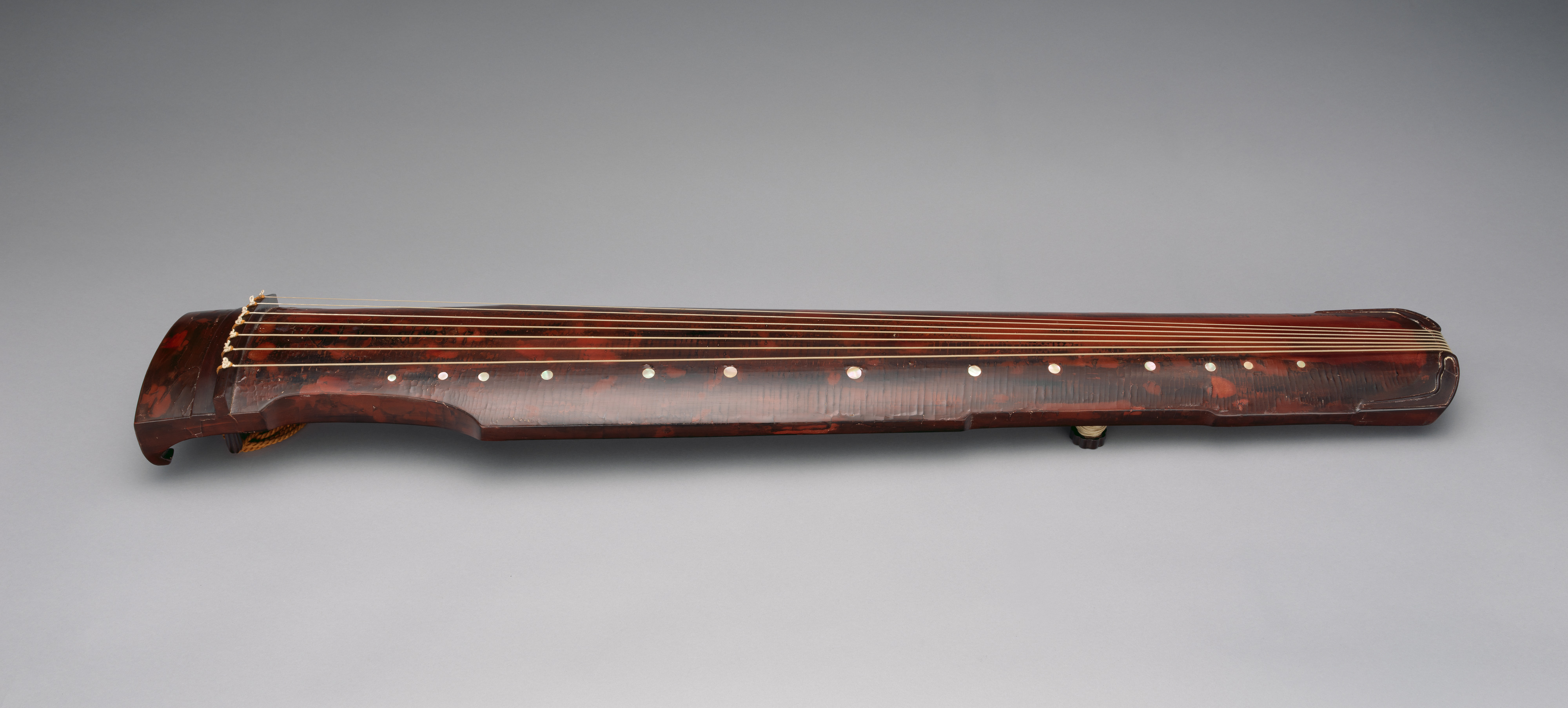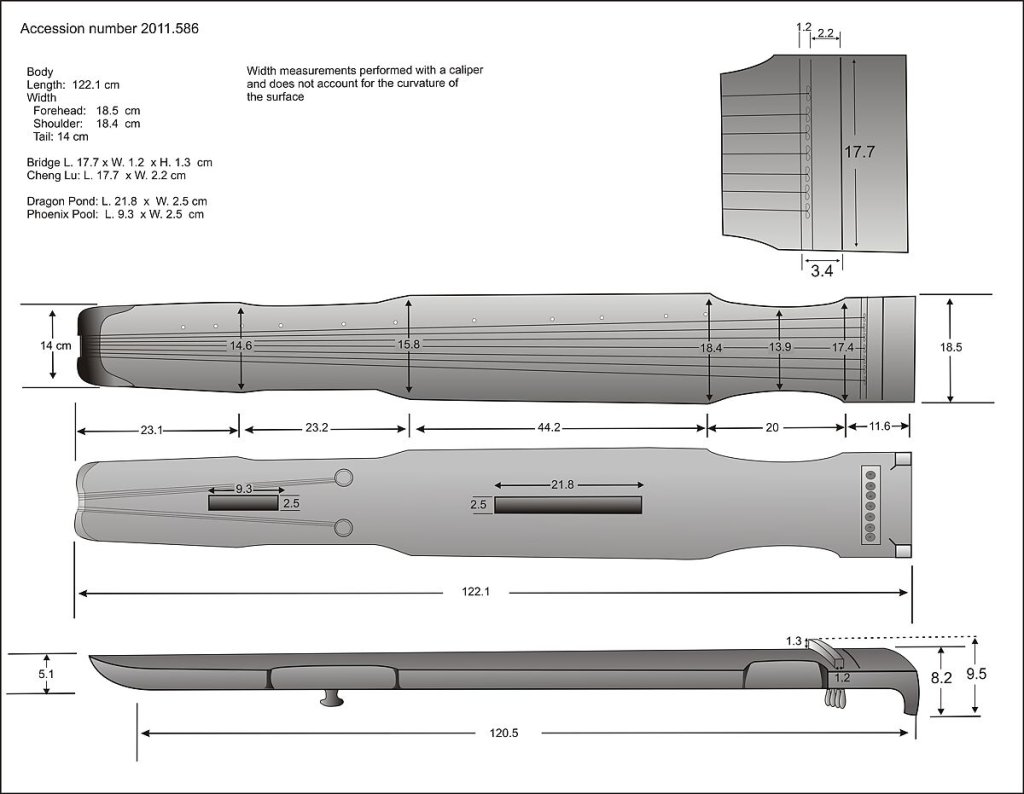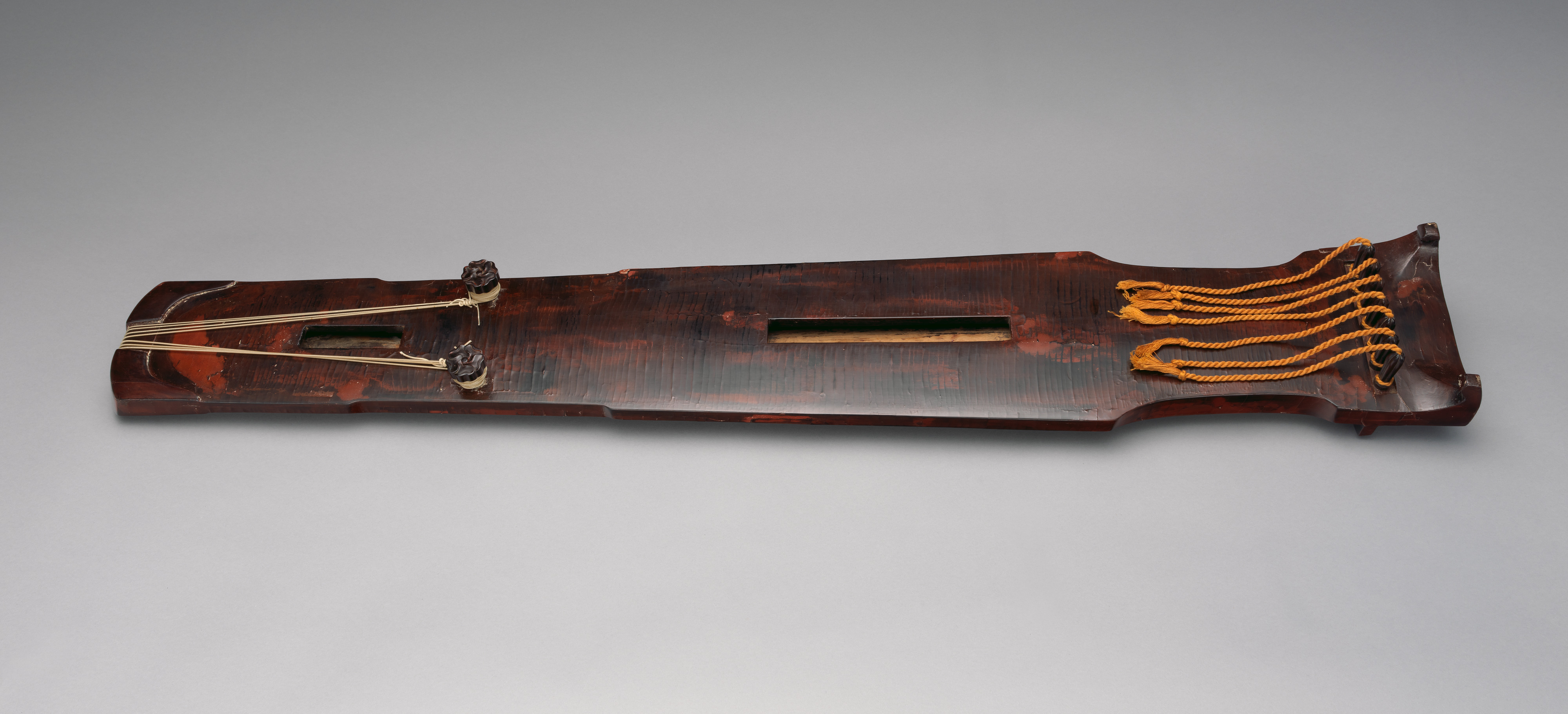Introduction
Imagine a scholar sitting alone by a tranquil lake, a gentle breeze stirring the water’s surface. His fingers glide over the lacquered wood of an ancient instrument, plucking notes so soft and ethereal they seem to dissolve into the mist. This is the Guqin—a musical companion of poets, philosophers, and sages for over 3,000 years. More than just an instrument, the Guqin is a bridge between music and thought, between the past and the present. But what makes it so unique, and why has it remained a symbol of refinement in Chinese culture?

Chinese
late 17th–mid 18th century
On view at The Met Fifth Avenue in Gallery 684
The Basics: What is Guqin?
The Guqin (古琴), often called the “instrument of the sages,” is a seven-stringed zither that embodies the ideals of subtlety, introspection, and artistic depth. Unlike the more popular Guzheng, which produces bright and dramatic melodies, the Guqin whispers its music—demanding a patient ear and a sensitive touch.
The Essence of Guqin:
- A Voice of the Past: The Guqin is not meant for grand concert halls but for intimate spaces, where music meets philosophy.
- A Study in Simplicity: Its seven silk or metal-wound strings rest on a fretless wooden board, requiring precise finger movements to shape each note.
- A Music of Nuance: Unlike Western instruments with fixed tuning and loud projection, the Guqin relies on subtle variations of touch, pressure, and sliding motion to create its expressive range.
Notice: All rights reserved.
A Legacy Across the Centuries
The Guqin’s history is intertwined with that of China itself. Confucius, one of the most influential thinkers in history, played the Guqin as a form of self-cultivation, believing music was essential for moral refinement.
Key Historical Moments:
- Before the Qin Dynasty (before 221 BCE): The earliest references to Guqin appear in classical texts, linking it to ritual and scholarship.
- Tang and Song Dynasties (618–1279): The golden era of Guqin, when many famous melodies were composed, and playing the instrument became a mark of a true literatus.
- Modern Revival: Despite a decline in the 20th century, the Guqin was recognized as a UNESCO Intangible Cultural Heritage in 2003, sparking a renewed interest worldwide.

The Sound of Stillness
The Guqin is sometimes called “the sound of the void.” It is an instrument that does not impose itself but rather invites the listener to lean in. Its music is a dialogue between silence and sound, presence and absence.
Three Signature Sound Techniques:
- San Yin (散音) – Open string sounds, deep and resonant, akin to the toll of a distant bell.
- An Yin (按音) – Stopped notes, produced by pressing the string along the board, allowing for infinite variation in pitch and expression.
- Fan Yin (泛音) – Harmonic overtones, shimmering like the reflection of the moon on water.

How is Guqin Played?
Guqin playing is a form of meditation. Every pluck of the string is deliberate, every slide of the finger an echo of the player’s inner world. Unlike the Western approach to musical training, where technical mastery is the goal, Guqin practice is about cultivating the right state of mind.
Fundamental Techniques:
- Tiao (挑): A light outward pluck, like a leaf carried by the wind.
- Mo (抹): A gentle inward stroke, reminiscent of calligraphy.
- Zhu (注): Sliding between notes, allowing sound to flow like water.
- Yin (吟) & Rou (揉): Vibrato techniques, as if conversing with the strings.
The Scholar’s Instrument
For centuries, the Guqin was considered an extension of a scholar’s soul. It was not an instrument for entertainment but a medium for contemplation. Many of China’s most celebrated poets—such as Su Shi and Wang Wei—wrote verses inspired by its music.
A Few Literary and Artistic References:
- “High Mountains and Flowing Water” (高山流水): A famous Guqin piece that symbolizes deep friendship and understanding.
- Guqin in Chinese Paintings: Often depicted in scenes of scholars retreating into nature, embodying ideals of harmony.
- Poetry and Music: Poets frequently described the experience of playing Guqin as akin to communing with the universe.
Where Can You Learn Guqin?
Today, the Guqin is no longer confined to China’s classical tradition. Many musicians around the world are rediscovering its quiet power, whether for personal enjoyment or cultural exploration.
Recommended Resources:
- Books: “The Lore of the Chinese Lute” by Robert H. van Gulik.
- Online Courses & Tutorials: YouTube, specialized Guqin academies, and international cultural institutions.
- Museums & Workshops: Hands-on experiences at cultural centers in China and abroad.
Frequently Asked Questions
Is Guqin hard to learn?
While it may seem intimidating due to its subtle playing techniques, Guqin is more about musical expression than rigid technical precision. Beginners can start with simple melodies and gradually explore its depth.
What is the difference between Guqin and Guzheng?
Guqin is a more introspective instrument with a softer sound, while Guzheng is often played in ensembles and has a more percussive, dramatic quality.
Can I learn Guqin without a teacher?
Yes, there are now many online resources, though having an instructor helps with nuances in technique and historical context.
Where can I buy a Guqin?
Quality instruments can be found through specialized luthiers in China, as well as online platforms. Always research the reputation of a seller before purchasing.
Conclusion
The Guqin is not merely an instrument—it is an experience, a philosophy, and a way of life. Its music does not demand attention but rewards those who listen deeply. Whether you are drawn to its rich history, its meditative sound, or its connection to centuries of Chinese philosophy, learning about the Guqin is an invitation to explore one of the world’s most refined musical traditions.
If you’re curious to learn more beyond the basics, the following articles offer deeper insights into Guqin practice, philosophy, and its place in Chinese musical culture.
评论
《“What is Guqin? The Ultimate Guide to This Ancient Chinese Instrument”》 有 1 条评论
[…] If you want a more practical introduction, start here: What is Guqin? The Ultimate Guide → […]